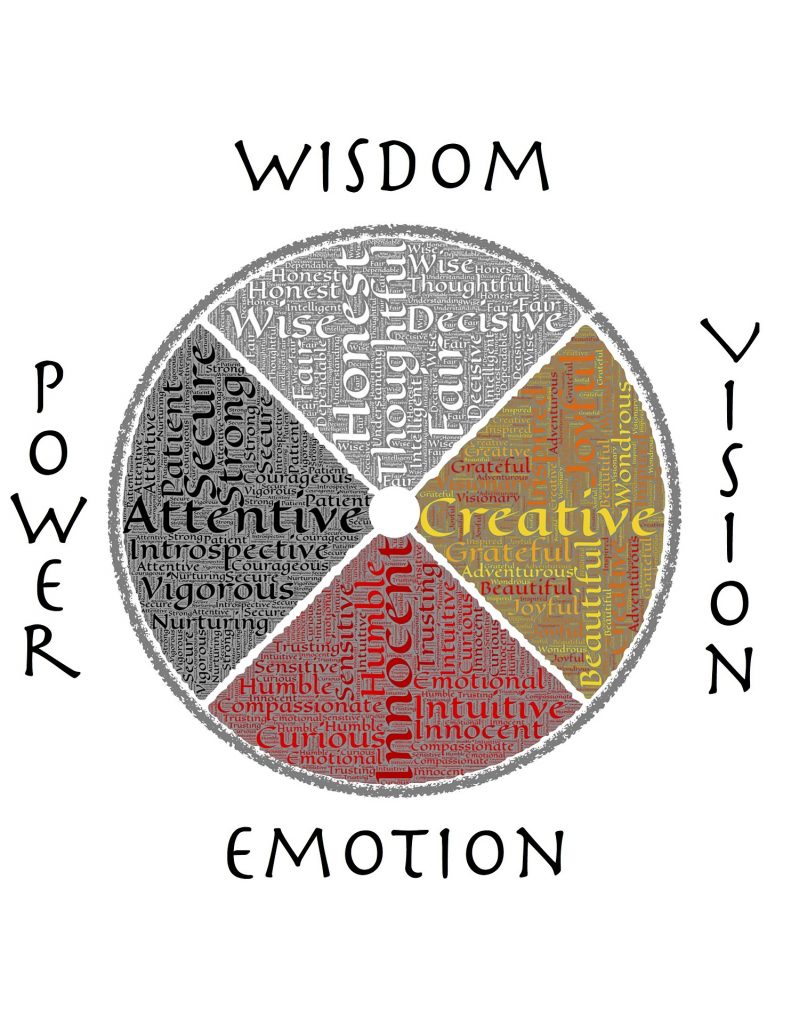-
Student-Centered Holistic Teaching Philosophy

Writing is a Social and Rhetorical Activity . . . All Writers Have More to Learn One of my most rewarding experiences as a graduate teaching assistant in the Master of Arts in Professional Writing program at Kennesaw State University has been the evolution of self. Giving and sharing part of yourself with others requires great focus and reflection of not only where you are but where you have been. Looking back from this reflective contextual framework, I re-read a quote of mine that has now come to full fruition, “Writing, like life, is a series of events and experiences that lead the writer to traverse different paths. Often times, this exploratory process remains in the shadows, out of sight, and unbeknownst to each writer” (Grant, “Writing: Know Yourself”). At the time this blog post was written, I was completely submerged in the very process I was mentioning. Looking back now, at the end of the semester, I realize how fundamental those words have been in shaping my underlying philosophical methods of teaching.
I began the master’s program this fall in hopes of one day becoming a successful professor of writing. The most eye-opening experience to date has been the realization that what works best for students, also works best for instructors. There is no magical one-size-fits-all when it comes to the teaching of writing. There is no magical one-size-fits-all classroom pedagogy and most definitely no one-size-fits-all student learning process. The one major takeaway from not only this course, Understanding Writing as a Process, but also from my experience across the graduate-level curriculum, is that learning should be a holistic and student-centered experience. I believe the purpose of education is to provide knowledge and tools from which students can use as a springboard for learning. As stated in a previous blog post, “the foundational approach to this style of instruction is concerned with the student’s ‘whole self’” (Grant, “Perseverance”).
It is in this basic premise that I foster my teaching philosophy — that I am a facilitator of learning only. It is not my intention or my goal to tell students the “right way” to write. Instead, I want to provide them training and education in English composition so that they may grow and blossom in their own writing styles. In other words, I hope to provide the foundational materials necessary to gain confidence, skills, and classroom experiences that will enable students to pursue their unique paths. Writing is a part of every aspect of life, and no two people have the exact same style. I want students to expand their classroom learning experiences and develop personal and individual writing abilities as well as strengthen communication skills from those said experiences. Empowering others through the sharing of knowledge is very important to me. Helping foster confidence and expressivity of self through writing composition is the framework from which I have built and will continue to develop my classroom pedagogy.

Student-Teacher Goals Students learn best by practice and hands-on experience. Memorizing and studying are necessary methods of learning retention, but learning through personal experience creates a stronger cognitive bond. Incorporating a student-centered approach is essential as not all students will present at the same juncture in their learning journey. By meeting students where they are academically, as a professor, I can then help promote confidence in the writing process. Overwhelming students and applying a one-size-fits-all framework will lead to insecurity and wilting of the blossoming process described above. My goals as a professor are as follows: to teach and foster writing habits that can be adopted across the curriculum; to teach the mechanics behind what can make writing powerful. In other words, my goal is to not only help students adapt various types of writing styles depending upon the end-user but to also teach them ways in which to make their writing present as more powerful to the intended reader. Ultimately, the utility of writing is a mode of communication. Therefore, learning strategic ways of self-expression through the written medium will only enhance communication skills, as well as strengthen written and multimodal rhetoric.
My teaching philosophy is based heavily on Linda Adler-Kassner and Elizabeth Wardle’s classroom edition of Naming What We Know: Threshold Concepts of Writing Studies. This semester, as a small cohort, we studied the five threshold concepts of writing pedagogy, and I found myself intrigued and supportive of two main points to include: all writers have more to learn and writing is a social and rhetorical activity. These two concepts alone represent the groundwork from which I will base my classroom instruction. Similarly, I had the opportunity to shadow Dr. Amy Sandefur’s English 1101 course for a syllabus analysis project and was able to witness these concepts being implemented in her pedagogical approach. Because these concepts are so paramount in my teaching philosophy, I would like to discuss each one individually.

Revision is key to successful writing All writers have more to learn. Such a short statement, yet so very profound in the instruction of composition. As a graduate teaching assistant at the Kennesaw State University writing center, I have had the opportunity to meet with students from various academic levels, from college freshmen through doctoral thesis work. Regardless of the writing abilities or educational level of writing, all students benefit from revising their work. Countless times I have experienced meeting one-on-one with a student that felt as though they were only in the writing center to make final line editing “proofreading” changes in their essay. However, after reviewing the assignment guidelines, reading through the polished essay, and discussing areas where global and local changes could be incorporated, students typically leave with self-directed modifications that lead to further revision. Through the revising process, students learn to view their writing not as an author, but as a reader. With each revision brings greater rhetorical focus and more targeted communication.

Writing is a Social and Rhetorical Activity . . . Writing is a social and rhetorical activity. The Conference on College Composition and Communication supports this theoretical concept and encourages teaching methods in the classroom that allow for social activities such as collaborative peer review throughout the drafting, writing, and revision processes. I have experienced this concept at work in the KSU writing center, as well. At times, students come into a session with no idea what to write or even where to start. Immediately, we begin by reviewing the instructor’s guidelines for the assignment. Generally, although students have already read the instructions on their own, they seem to have an “ah-ha” moment where they begin to understand the task at hand. The only aspect of the writing process that has changed since they entered the writing center was a conversation, a social activity. As Grant references, “communication is so ingrained in human nature that often times we don’t need to think or analyze our actions in response to verbal cues” (“The Essence”). As a tutor-student partnership, we then begin the brainstorming process, and within minutes, students seem to have a glow about them, and stress levels seem to wither away. The process of talking about the assignment and bringing every-day context to the task at hand enables the writing process to begin.

Writing is a Process . . . Writing is just that — a process! Every process I have experienced and learned through my work in the writing center has led to understanding and believing that writing really is an actual process. In the beginning, it is crucial for students (and professors) to just get their thoughts expressed on paper or the flashing white, blank page on the computer screen. The initial process of letting the mind wander and documenting thoughts as they manifest is fundamental. For many students, this initial brainstorming will then lead to a workable outline from which students can reference as they begin the initial draft composition. This first draft is meant to establish a framework that students may then revise, participate in peer review, revise again, and so goes the recursive nature of writing. Helping students embrace this process of writing will lead to enhanced future success in all types of writing. Below is a video that explains this process in detail.
How to Teach Writing as a Process Using these two threshold concepts of learning as well as my own writing center experiences, I fully plan to integrate and contextualize them into my classroom pedagogy. Students will experience and have the opportunity to participate in peer review, which supports all three of the theoretical platforms and fosters the recursive process of writing. Above all else, writing tends to cohabitate with a persona of difficulty for many students. My student-centered philosophy is aimed at de-stigmatizing the writing process, strengthening student confidence in their own writing processes, and supporting the learning process of a skill that students will utilize for the rest of their academic and professional careers, in addition to their personal lives.
References
Abdullah, Shahid. Pixabay, 2019, pixabay.com/illustrations/plan-do-act-check-system-workflow-1725510/.
Adler-Kassner, Linda, and Elizabeth Wardle, editors. Naming What We Know: Threshold Concepts of Writing Studies, Classroom Edition. Utah State University Press, 2016.
BibliU. “What Does ‘Holistic Learning’ Mean for Students?” YouTube, uploaded 1 Aug. 2019. youtube.com/watch?v=2aFIfCwSEnc&feature=youtu.be. Accessed 30 Nov. 2019.
Cafaro, Lorenzo. Pixabay, 2019, pixabay.com/photos/correcting-proof-paper-correction-1870721/.
“CCCC Position Statements.” Conference on College Composition, 22 October 2018, cccc.ncte.org/cccc/resources/positions.
Geralt. Pixabay, 2019, pixabay.com/photos/feedback-exchange-of-ideas-debate-2463927/.
Grant, Melinda. “The Essence of Writing.” Whisperings, 9 Sept. 2019, mgailgrant.com/philosophical-thoughts/the-essence-of-writing/. Accessed 30 Nov. 2019.
Grant, Melinda. “Perseverance in Writing.” Whisperings, 25 Aug. 2019, mgailgrant.com/philosophical-thoughts/perseverance-in-writing/. Accessed 30 Nov. 2019.
Grant, Melinda. “Threshold Concepts in Action.” Whisperings, 2019, mgailgrant.com/projects-assignments/threshold-concepts-in-action/.
Grant, Melinda. “Writing: Know Yourself.” Whisperings, 14 Sept. 2019, mgailgrant.com/philosophical-thoughts/know-yourself-through-writing/. Accessed 30 Nov. 2019.
Kalhh. Pixabay, 2019, pixabay.com/illustrations/workshop-training-seminar-group-1425446/.
NikolayFrolochkin. Pixabay, 2019, pixabay.com/photos/diary-office-work-pen-notebook-1974728/.
Write On! with Jamie. “How to Teach Writing: The Writing Process.” YouTube, uploaded 2 May 2013. youtu.be/JPUh9mfSqWU. Accessed 30 Nov. 2019.
-
Perseverance in Writing

My writing philosophy closely aligns with Oscar Wilde’s famous quote, “Be yourself; everyone else is already taken.” Although I completely understand there are underlying mechanics of formal writing that many authors follow, and book publisher editorial staffs expect, I also believe that writing is a form of creative expression that shouldn’t be tamed. What I do know about writing, is it means something very different to each author.
Writing styles vary drastically among peers, and for this reason, true art may flourish without boundaries. If everyone used the same syntax, visual structure, or perspective, how bland the world would truly be. Some writers are very organized and methodical; they create outlines, reverse outlines, and design their story, whether formally written or organized only in their thoughts. Other writers use a more free form and write as they go.
Defining “good” writing is quite difficult as it is a subjective analysis based on the preferences of each individual reader. Therefore, I feel as though “good” writing captures the author’s intention. Compositions changed to fulfill a specific genre’s expectations or novels edited to an extreme extent where the storyline is completely changed may increase book sales; but are these changes examples of “better writing?”
J.K. Rowling’s fantasy series, Harry Potter, is an excellent example of this paradox. The book series has sold over four hundred million copies. Upon completion of the first book, Ms. Rowling queried agents and was declined “loads” of times before the London publishing house, Bloomsbury, accepted the manuscript (Gillett). I often wonder what agents who declined the manuscript for not being marketable must think now. Rowling has been identified as the first author to become a billionaire from writing (Carmichael).
A commonly held belief is that writing is easy for successfully published authors. I don’t believe this to be true. At the beginning of each and every manuscript created is a blank page, a pen or pencil, and/or a keyboard. Ms. Rowling speaks to the tenacity and perseverance that all writers must possess and how failure itself will help a writer discover themselves. I believe there is something for all aspiring writers to learn from the most successful female author in history, and it has nothing to do with a financial payoff.
As shown in the following video, Rules for Success, The Top Ten Rules for Success, according to J.K. Rowling, are: failure helps you discover yourself; take action on your ideas; you will be criticized; the process is subjective; remember where you started; believe; there is always trepidation; life is not a checklist of achievements; persevere; dreams can happen; we have the power to imagine better (Carmichael).
In my future classroom, I hope to utilize a teaching philosophy known as holistic education. Put simply, the foundational approach to this style of instruction is concerned with the student’s ‘whole self.’ It attempts to recognize and understand that each student has various potentials in areas of intellect, emotion, artistic, and creative modes, among others (Wikipedia). Below is a short video that attempts to explain how the holistic educational approach can somewhat fill in the gaps for student learning: What Does ‘Holistic Learning’ Mean for Students?
As a writer myself, I understand the fear of failure and being critiqued on something as personal as bearing your soul on paper. However, following the example of J.K. Rowling, I further hope to help my students embrace the concept of believing in themselves.
BibliU. “What Does ‘Holistic Learning’ Mean for Students?” Online video clip. Youtube. YouTube, 1 August 2019. Web. 25 August 2019, youtu.be/2aFIfCwSEnc.
Carmichael, Evan. “J K. Rowling’s Top 10 Rules for Success (@jk_rowling).” Online video clip. YouTube. YouTube, 15 September 2015. Web. 25 August 2019, youtu.be/bvMtUuedLwU.
Gillett, Rachel. “From welfare to one of the world’s wealthiest women — the incredible rags-to-riches story of J.K. Rowling.” Business Insider, www.businessinsider.com/the-rags-to-riches-story-of-jk-rowling-2015-5. Accessed 25 August 2019.
Hain, John. “Medicine Wheel.” Pixabay, 16 September 2014. pixabay.com/illustrations/medicine-wheel-wisdom-power-vision-444550/. Accessed 25 August 2019. Copyright-free.
“Holistic Education.” Wikipedia. Wikipedia.org, 14 August 2019, en.wikipedia.org/wiki/Holistic_education. Accessed 25 August 2019.